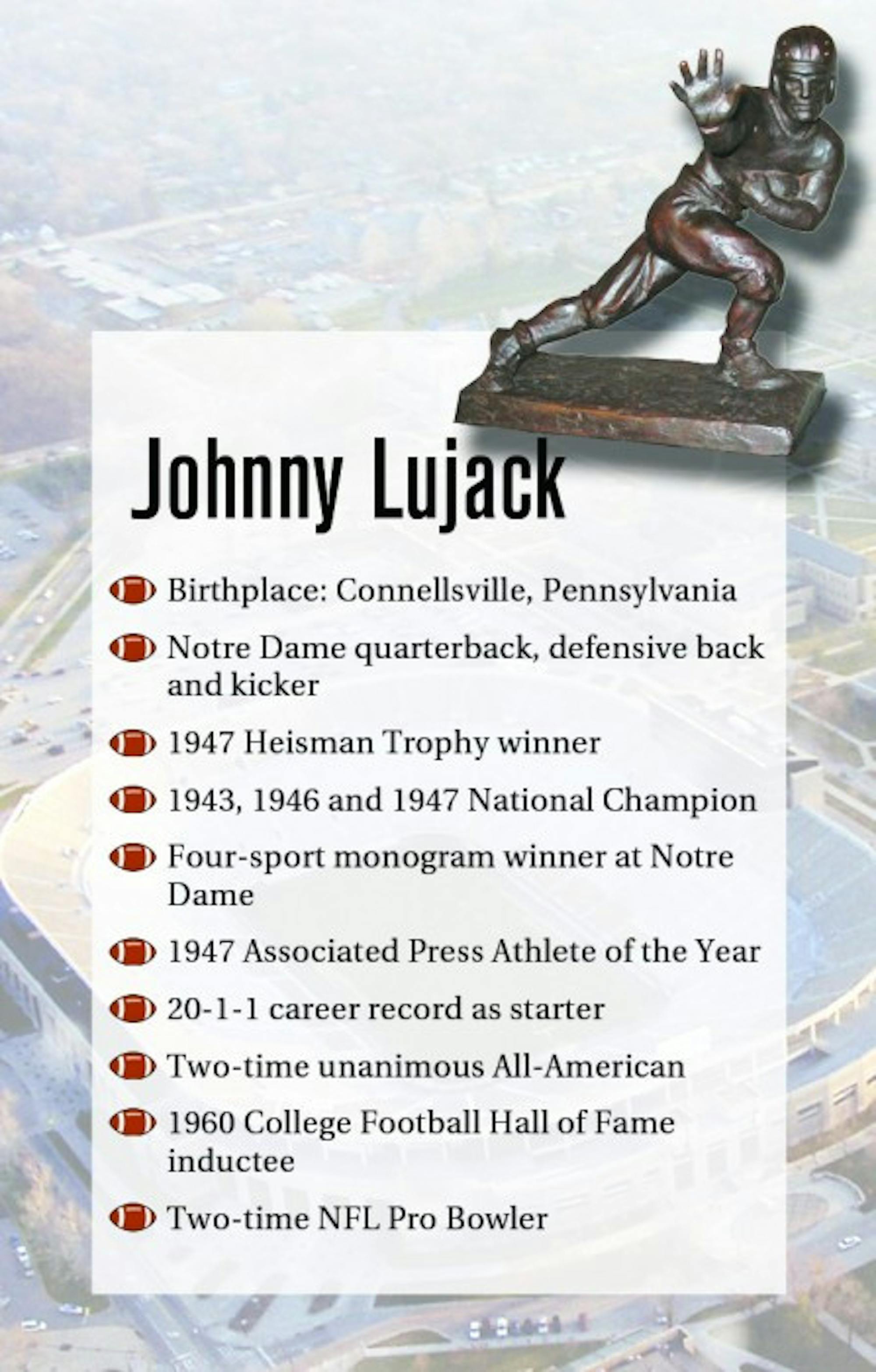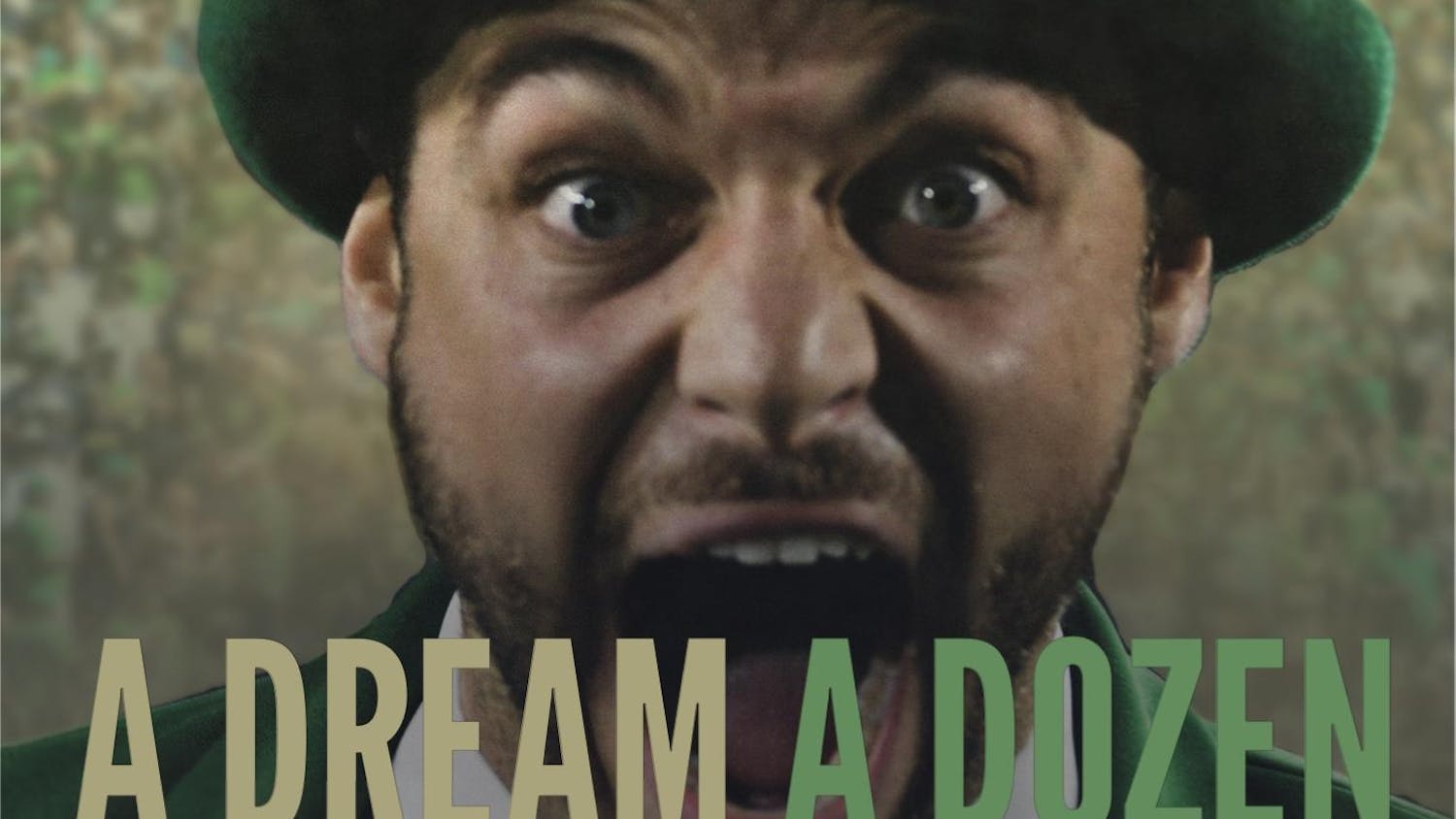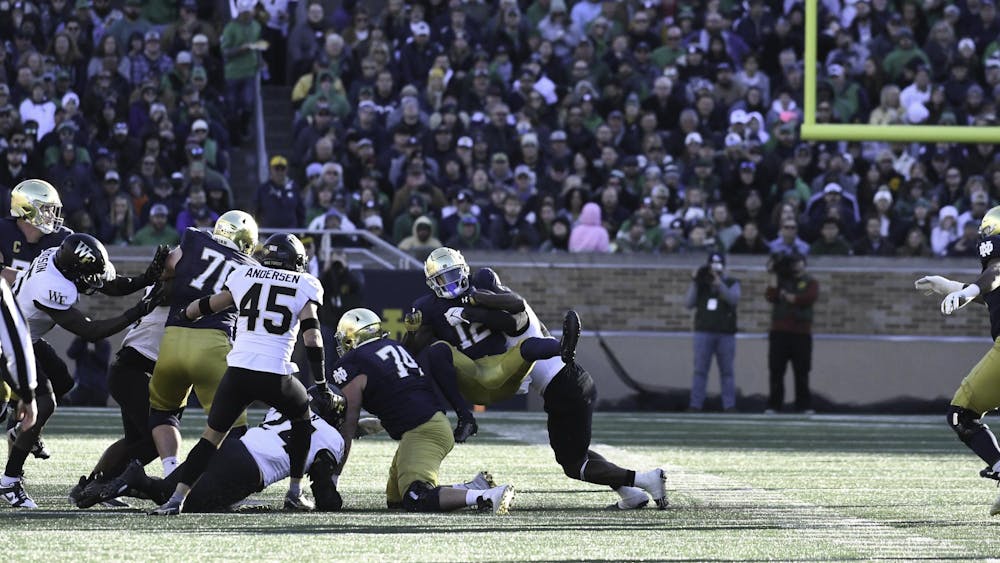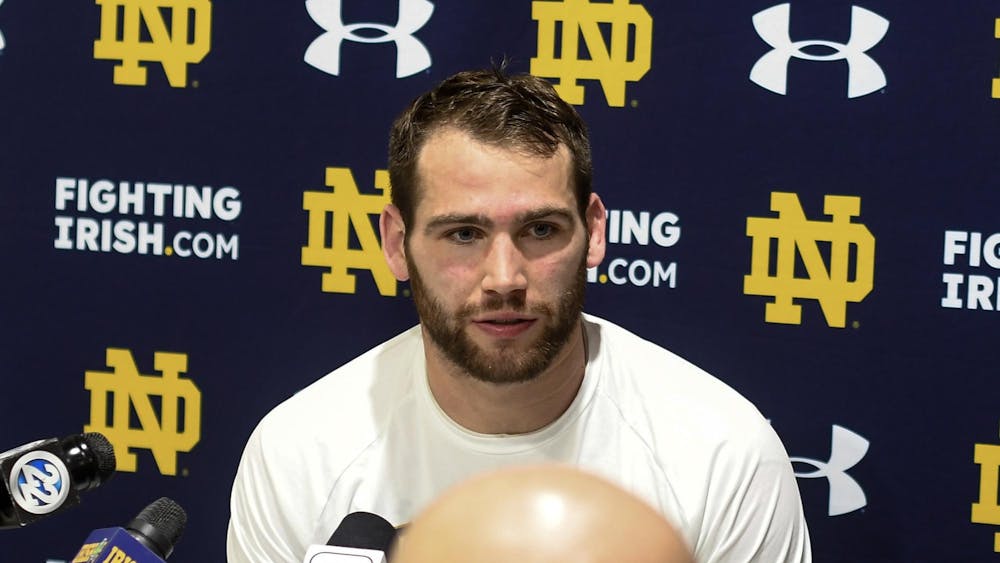
Notre Dame was a much different place in the 1940s.
Women were not admitted to the University, and wouldn’t be welcomed on campus as students for another three decades.
Theodore Hesburgh was ordained as a Holy Cross priest in 1943, joined the Notre Dame faculty in 1947 and wouldn’t become president of the University until 1952.
And Johnny Lujack was leading Notre Dame to a trio of national championships while collecting the program’s second Heisman Trophy.
Born in Connellsville, Pennsylvania, in the heart of coal country, Lujack said he always dreamed of playing at Notre Dame.
“I always knew about Notre Dame. I mean I loved Notre Dame the first time I ever heard the name,” Lujack said.
Lujack described sitting around the family’s Philco radio — another example of the changing times — bent over and listening to every Notre Dame game. He said he would love to go to Notre Dame, but didn’t think it was even a possibility.
That was, until a man named Henry Opperman alerted a Notre Dame scout in Pittsburgh about Lujack. Lujack said he got a try-out on campus under the watchful eye of then-head coach Frank Leahy, and the next day he got a scholarship offer.
“If it hadn’t been for that Henry Opperman to take an interest in me, I would never have gone to Notre Dame, because I was not [previously] offered a scholarship,” Lujack said.
Lujack said campus when he first got there “looked like holy ground.”
Lujack shone on the gridiron for the Irish in 1943 before joining the Navy the next year during the height of World War II.
“I told everybody that I was stationed at Fort Pierce, Florida, where they taught you to be part of an underwater demolition team that was going to go in at Normandy, and you had to go underwater and put mines over these barriers and stuff and blow the place up,” Lujack said. “And people would say, ‘Wow, that is really something.’
“I said, ‘Well, don’t get too excited about it, because I never got in the water down there [in Fort Pierce]. I was there to play football.”
Lujack said he played on the Navy’s football and basketball teams during his time in the service, touring the country and playing in front of crowds of military men.
Lujack, in his time on the gridiron at Notre Dame, played defensive back, running back, punter, kicker and quarterback. In his first year as a sophomore in 1943 — freshmen couldn’t play varsity back then, another long-lost tidbit — he backed up Notre Dame’s first Heisman trophy winner, Angelo Bertelli, until Bertelli was drafted into the Marines six games into a ten game season. Lujack stepped in for the remaining four games and threw for 525 yards and four touchdowns, also finishing the season with 191 yards on the ground, leading the eventual national champions to victories over No. 3 Army, No. 8 Northwestern and No. 2 Iowa Pre-Flight.
Yet Lujack also starred in other sporting arenas as well: on the basketball court, the baseball diamond and on the track squad, where he high-jumped and threw javelin. During Lujack’s sophomore year in 1943-44, he accomplished what no Notre Dame athlete has since: winning monograms in four sports in a single school year.
“I just did it because I wanted to be in sports,” Lujack said of his 1943-44 academic year. “I don’t think I could have sat out and watched other people do it. I wanted to do it because as a kid I was playing baseball and track and stuff like that. I was a pole-vaulter in high school, let alone high jump and javelin.
“But pole vaulting I was not very good at: I could clear about 11 [feet] six [inches], but that was about it.”
Lujack said it never occurred to him not to play the other sports. It just seemed natural.
“I just thought it was the thing to do,” he said. “If I didn’t go out for these other sports, what would I do? Probably studying, and that wouldn’t have been so good a deal.”
Upon his return from the Navy, Lujack accomplished his most well-known achievement by guiding back-to-back Irish teams to undefeated, national championship seasons, giving him a title in all three years he was eligible to play.
No other quarterback in college football history has three national championships as a starter, regardless of whether he had three years of eligibility or four.
Yet for Lujack’s offensive prowess, his biggest play he made during the 1946 game against Army at Yankee Stadium to preserve a 0-0 tie was a defensive one. Doc Blanchard, who had won the 1945 Heisman, broke free down the left sidelines. Lujack, in his defensive back position, representing the only man between Blanchard and the end zone, snared the big man around the ankles. The defense proceeded to hold the Army offense and keep the game scoreless.
“Well I’m glad I made that tackle, because I did not think that I’d played a very good game that day,” Lujack said. “I got hurt on Thursday in practice, I sprained an ankle. … When we got there and had that Friday practice, [Leahy] had me punting with my right leg, and that’s the one I hurt and it felt alright if it was taped up real good. So he said, ‘Okay, he can play.’
“So I played 60 minutes.”
Now the oldest living Heisman winner at 90, Lujack said he has gained perspective on why being a part of Notre Dame is different.
“You can like Notre Dame while you’re here, but when you leave here, you start loving it.”













